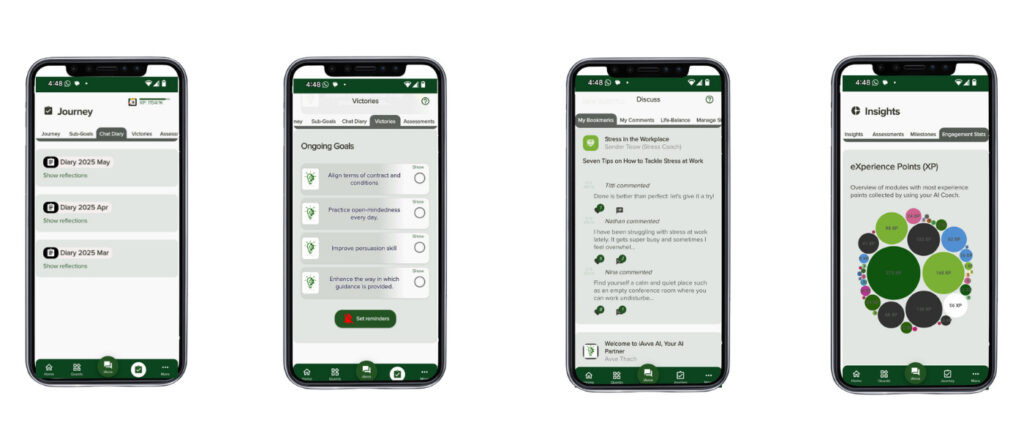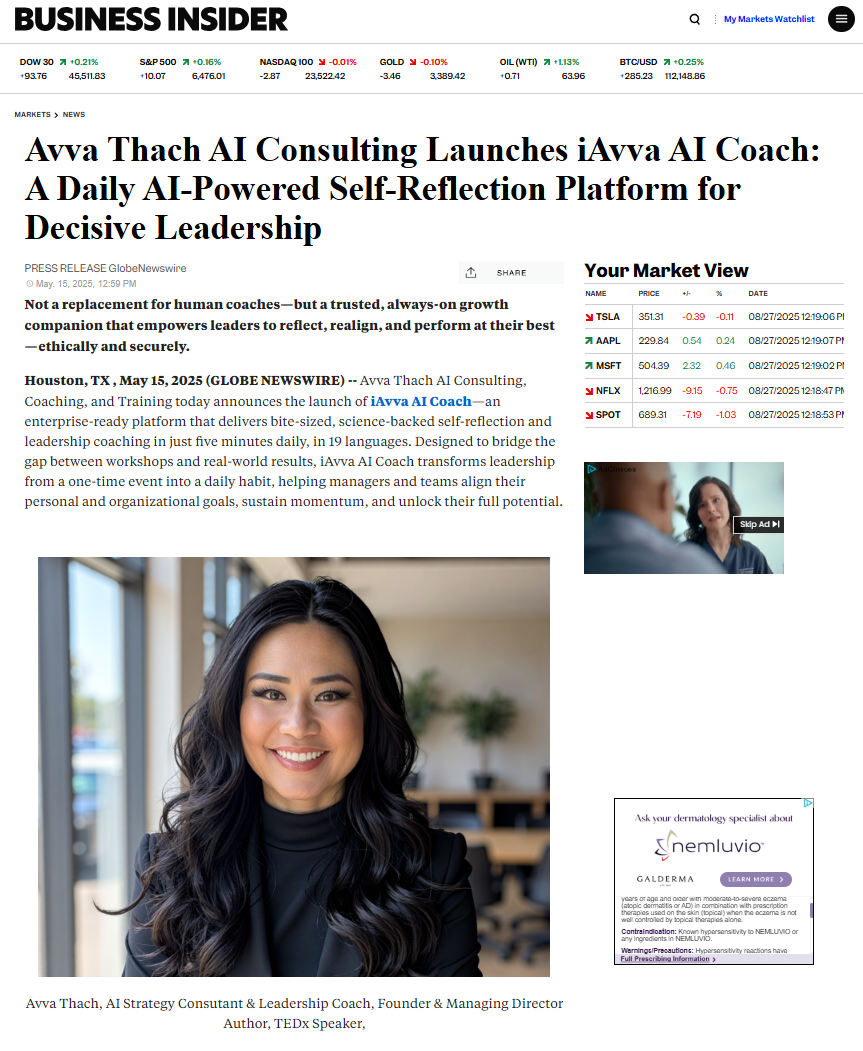Introduction to Executive Presence
Welcome to the world of executive presence, where charisma meets credibility. Your ability to develop executive presence can make or break your leadership journey. Imagine walking into a room and instantly commanding attention, like a rock star at a sold-out concert. That’s the kind of impact we’re talking about!
But what exactly is this elusive quality? Is it just about wearing a sharp suit and having a firm handshake? Spoiler alert: it’s much more than that! In this section, we’ll dive into the definition of executive presence, explore its importance in leadership roles, and give you a sneak peek of what’s coming up in this blog post.
Definition of Executive Presence
Executive presence is often described as the combination of personal traits and outward behaviors that inspire confidence in others. It’s that magical mix of leadership communication skills, nonverbal communication in leadership, and an authoritative communication style. Think of it as your professional aura-a blend of how you carry yourself, how you communicate, and how others perceive your ability to lead.
The key components include:
- Confidence: Projecting assurance in your decisions and actions.
- Clarity: Articulating ideas in a way that resonates with your audience.
- Charisma: Engaging others with an appealing personality.
- Credibility: Building trust through expertise and authenticity.
Importance in Leadership Roles
You may wonder why developing executive presence is so crucial. Well, let’s put it this way: leaders with strong executive presence are like magnets-they attract opportunities, inspire teams, and influence decisions. According to research, organizations led by individuals with high executive presence outperform their competitors by 20%. That’s not just fluff; it’s complex data!
Key Takeaway: Cultivating executive presence can significantly enhance your professional credibility and elevate your personal branding in business settings.
This quality becomes particularly vital during challenging times when decisive leadership is required. Effective leaders can navigate complexities while maintaining team morale-think of them as the captain steering the ship through stormy seas. They don’t just command respect; they earn it!
Overview of the Blog Post Structure
This blog post will serve as your roadmap for developing executive presence. Here’s what you can expect:
- Deep dive into the definition of executive presence.
- Discover why effective leadership requires this essential element.
- Actionable strategies to build and enhance your executive presence skills.
- Address common misconceptions surrounding executive demeanor enhancement.
- Practical next steps for cultivating a commanding presence at work.
Buckle up! We’re about to embark on an exciting journey toward developing influential leadership qualities that will not only boost your confidence levels but also strengthen your workplace authority image. Ready? Let’s go!

Understanding the Components of Executive Presence
Now that we’ve set the stage for what executive presence really means, let’s break down its essential components. Think of executive presence as a well-crafted recipe; you need the right ingredients in just the right amounts to create that irresistible dish that everyone wants to savor. Here’s how to develop executive presence step by step.
Confidence and Composure
The first ingredient in our executive presence recipe is confidence. But hold on, it’s not just about strutting around like you own the place. It’s about projecting assurance in your decisions and actions while maintaining your composure, even when the pressure is on.
- Practice Assertiveness: Use clear and direct language to express your thoughts.
- Stay Calm Under Pressure: Develop techniques to manage stress effectively, such as deep breathing or visualization.
- Embrace Mistakes: Acknowledge when things go wrong and learn from them without losing your cool.
By mastering these techniques, you’ll not only boost your executive confidence levels but also cultivate a commanding presence at work that others will respect.
Communication Skills
If confidence is the backbone of executive presence, then communication skills are its heart. Effective leadership presence hinges on how well you articulate ideas and engage your audience. Think of it as conducting an orchestra; every note matters!
- Articulate Your Ideas: Use clear and persuasive speech to convey your messages.
- Engage Your Audience: Ask questions and encourage participation to foster dialogue.
- Utilize Storytelling: Share relevant anecdotes to illustrate key points and make them relatable.
A strong command of communication can significantly enhance your leadership influence techniques, making you more approachable and relatable.
Appearance and Body Language
Your appearance can speak volumes before you even say a word! It’s like showing up to a party in a tuxedo while everyone else is in jeans; you’re bound to turn heads! But it goes beyond just wearing sharp clothes-it’s about how you carry yourself too.
- Dress Appropriately: Choose attire that aligns with your industry standards while still reflecting your personal style.
- Mind Your Posture: Stand tall with an open posture to project confidence and approachability.
- Master Nonverbal Cues: Use eye contact, gestures, and facial expressions effectively to reinforce your verbal messages.
This combination of appearance and body language plays a crucial role in enhancing professional credibility.
Emotional Intelligence and Authenticity
No discussion about executive presence would be complete without mentioning emotional intelligence (EI). This component helps leaders connect with their teams on a human level-think of it as the secret sauce that makes everything taste better!
- Practice Empathy: Understand others’ perspectives by actively listening without judgment.
- Be Authentic: Show vulnerability where appropriate; people respond well to genuine leaders who are relatable.
- Manage Emotions Effectively: Recognize your emotions and those of others, using this awareness to guide interactions positively.
Cultivating emotional intelligence will not only improve your leadership communication skills, but also help build stronger relationships within your organization-a true hallmark of effective leadership!
The Takeaway: Understanding these components is crucial for anyone seeking to enhance their executive presence skills. By blending confidence, communication prowess, polished appearance, emotional intelligence, and authenticity, you’ll elevate your professional image like never before!
The journey doesn’t stop here! Stay tuned as we explore actionable strategies for enhancing each component in our following sections. Ready for more? Let’s dive deeper into mastering executive presence together!

The Role of Executive Presence in Organizational Development
When we discuss developing executive presence, we’re not just talking about a superficial veneer of confidence and charisma. No, my friends, we’re diving into the very essence of what makes leaders effective in shaping their organizations. Think of executive presence as the secret ingredient in a recipe that transforms a mundane dish into a gourmet experience. It’s crucial for driving organizational development!
Impact on Team Dynamics and Collaboration
Imagine walking into a meeting where everyone is engaged, ideas are flowing, and collaboration feels electric. That’s the magic of strong executive presence! Leaders who actively cultivate this quality can significantly enhance team dynamics.
- Fostering Trust: When leaders project confidence and authenticity, team members feel secure in sharing their thoughts, leading to more enriching discussions.
- Encouraging Participation: A commanding presence invites input from all levels, transforming meetings from monologues into dialogues.
- Resolving Conflicts: Leaders with strong executive presence can navigate tensions with grace, turning potential disputes into opportunities for growth.
This kind of environment not only boosts morale but also enhances productivity, because let’s face it, who doesn’t want to be part of a winning team?
Influence on Company Culture and Values
The ripple effect of developing executive presence extends beyond individual teams, shaping the entire organizational culture. Leaders who embody their company’s values through their demeanor set the tone for everyone else.
- Modeling Behavior: When leaders demonstrate integrity and commitment, they inspire employees to adopt these traits.
- Promoting Inclusivity: A strong executive presence fosters diverse voices, enriching the organizational culture.
- Driving Change: As change agents, leaders with a commanding presence can facilitate transitions smoothly while keeping everyone aligned with core values.
A company culture that thrives on these principles leads to higher employee satisfaction and retention rates-an undeniable win-win!
Effect on Stakeholder Engagement and Trust Building
Your executive presence doesn’t just impact your internal teams; it also significantly influences how stakeholders perceive your organization. Strong leadership can build bridges with clients, partners, and investors alike!
- Enhancing Credibility: Stakeholders are more likely to trust leaders who consistently exhibit confidence and clarity in communication.
- Building Relationships: Engaging authentically with stakeholders fosters long-term partnerships that benefit everyone involved.
- Influencing Decisions: A leader’s ability to project authority can sway critical decisions in favor of the organization during negotiations or discussions.
The Takeaway: Developing executive presence is not just about personal branding; it’s about creating an ecosystem where teams thrive, cultures flourish, and stakeholder relationships deepen. Elevate your professional image today, and watch how it transforms your organization!
In conclusion, mastering executive presence is crucial for anyone seeking to drive meaningful change within their organization. Whether you’re navigating team dynamics or engaging with external stakeholders, the impact of cultivating this quality cannot be overstated. So gear up-it’s time to take action!
Strategies to Develop Executive Presence
Ready to take your leadership game to the next level? Developing executive presence is not just a nice-to-have; it’s a must-have for anyone looking to make an impact in their organization. Think of it as leveling up in a video game-you need the right skills and strategies to unlock that next achievement!
Self-Assessment and Feedback Mechanisms
The first step in executive presence development is self-assessment. This is where you put on your detective hat and evaluate your strengths and weaknesses. Use tools like 360-degree feedback surveys or simple self-reflection techniques. Ask yourself questions like:
- What are my communication strengths?
- How do others perceive my level of confidence?
- Am I actively listening, or am I just waiting for my turn to speak?
Feedback from peers can be invaluable. Consider setting up regular check-ins where colleagues can share their insights on your leadership communication skills. This will not only help you enhance executive presence but also refine your professional persona.
Coaching and Mentorship Opportunities
If self-assessment is the starting line, coaching is the turbo boost! Engaging with a mentor or executive coach can provide tailored guidance that accelerates your journey toward mastering executive presence. Think of them as your personal trainer, helping you build those leadership muscles!
- Identify Your Mentor: Look for someone who embodies strong executive presence and has experience in your field.
- Set Clear Goals: Collaborate with your mentor to identify the specific aspects of executive presence you wish to enhance.
- Regular Check-Ins: Schedule consistent meetings to discuss progress and gain new insights.
Training Programs Focused on Communication Skills
No one becomes an effective communicator overnight, so consider enrolling in training programs that focus specifically on enhancing communication skills. These programs often cover everything from articulate and persuasive speech for executives to mastering nonverbal cues.
- Public Speaking Workshops: Develop confidence through practice and expert feedback.
- Active Listening Training: Learn techniques that improve engagement during conversations.
- Storytelling Courses: Discover how to craft compelling narratives that resonate with audiences.
Cultivating Emotional Intelligence through Practice and Reflection
If emotional intelligence (EI) were a superhero, it would be the one wearing a cape made of empathy! Cultivating EI is crucial for developing a strong executive presence because it helps you connect with others on a deeper level. Here’s how you can practice this super skill:
- Reflect Regularly: Set aside time each week to assess how well you understood others’ emotions during interactions.
- Practice Empathy Exercises: Engage in activities that require you to see situations from others’ perspectives.
- Seek Feedback on EI: Ask trusted colleagues how well they think you manage emotions in professional settings.
The Takeaway: Developing a commanding presence at work isn’t just about looking good; it’s about honing skills that inspire trust, respect, and engagement among team members. So roll up those sleeves, dive into these strategies, and watch as your executive leadership presence flourishes!
The journey doesn’t end here! As you embark on these strategies, remember that developing influential leadership qualities takes time and persistence. Your next step? Start implementing these tactics today, and see how they transform not only your professional image but also the dynamics within your organization!

The Intersection of AI Transformation and Executive Presence
In the rapidly evolving landscape of AI, the ability to develop executive presence is akin to having a superpower. It’s not just about knowing your algorithms from your analytics; it’s about how you lead your team through the digital transformation journey. Think of executive presence as the GPS guiding you through uncharted territories-both essential and invaluable!
The Importance of Leadership in AI Initiatives
As organizations embrace AI technologies, the role of leadership becomes increasingly pivotal. Leaders with a strong executive presence can effectively communicate their vision, align teams, and inspire confidence in their strategies. According to a recent study by McKinsey, companies that prioritize leadership development during AI initiatives are 1.5 times more likely to achieve their transformation goals.
Key Insight: Developing executive presence is crucial for leaders to navigate the complexities of AI transformation successfully.
Imagine being at the helm of a ship during a stormy night. You need to project calmness and decisiveness while ensuring everyone on board feels secure. That’s what cultivating a commanding presence looks like in the context of AI initiatives!
Navigating Change with Confidence in Digital Transformation Efforts
Change can be daunting, especially when it involves integrating cutting-edge technologies like AI into existing workflows. Leaders who enhance executive presence can help their teams embrace this change with open arms rather than clenched fists.
- Communicate Transparently: Share both challenges and opportunities that come with digital transformation.
- Encourage Feedback: Foster an environment where team members feel safe voicing concerns or suggestions.
- Lead by Example: Demonstrate adaptability by remaining open to new ideas and processes.
This approach not only boosts team morale but also enhances overall productivity-because who doesn’t want to feel like they’re part of something innovative?
The Role of Empathy in Leading AI-Driven Teams
Empathy is often overlooked in discussions about leadership, yet it’s an essential component when leading teams through AI transformations. A strong executive presence isn’t just about projecting authority; it’s also about connecting with your team on a human level.
- Listen Actively: Demonstrate genuine interest in your team’s thoughts and feelings about the changes brought on by AI.
- Acknowledge Concerns: Validate any fears or uncertainties related to job security or skill gaps due to automation.
- Provide Support: Offer training programs that equip employees with the necessary skills for new roles created by AI technologies.
The Takeaway: Cultivating empathy alongside your executive presence will foster stronger relationships within your team, making you not just a leader but also a trusted ally in navigating change.
Your ability to enhance executive presence skills, particularly during times of transformation, will distinguish you as an effective leader who not only drives results but also cultivates talent. So gear up; it’s time to combine technology with humanity!
Measuring the Impact of Executive Presence on Business Outcomes
So, you’ve got a grasp on what executive presence is and why it matters. But how do you actually measure its impact on business outcomes? Think of it like trying to quantify the effect of a great cup of coffee on your productivity-tricky, but not impossible! Let’s explore some practical ways to assess how developing executive presence can yield tangible results for your organization.
KPI Development for Leadership Effectiveness
Key Performance Indicators (KPIs) are your best friends when it comes to measuring the effectiveness of leadership. To track the impact of executive presence, consider developing KPIs that align with both individual and organizational goals. Here’s how:
- Employee Engagement Scores: Regular surveys can gauge how engaged and motivated employees feel under leaders with strong executive presence.
- Team Performance Metrics: Analyze productivity levels before and after implementing executive presence training.
- Retention Rates: Higher retention often correlates with effective leadership that fosters a positive work environment.
- Client Satisfaction Ratings: Happy clients often reflect effective leadership in client interactions.
By establishing these KPIs, organizations can create a clear picture of how enhancing executive presence skills contributes to overall success.
Case Studies Demonstrating Success through Enhanced Executive Presence
Nothing says “success” like real-world examples! Let’s take a look at some organizations that have reaped the rewards of investing in executive presence development:
| Company | Description | Results Achieved |
|---|---|---|
| Apex Innovations | A tech startup focused on leadership coaching for their management team. | 25% increase in employee engagement scores, leading to higher productivity levels over six months. |
| Catalyst Corp | A financial services firm that implemented an executive presence training program for its executives. | 40% improvement in client satisfaction ratings, resulting in increased contract renewals. |
| Nexus Solutions | A consulting agency that integrated emotional intelligence workshops into their leadership training. | 30% reduction in turnover rates, showcasing enhanced workplace morale and culture. |
These case studies highlight that investing in developing executive presence isn’t just fluff; it leads to measurable improvements across various business metrics.
Tangible Benefits for Organizations Investing in Leadership Development
The benefits of enhancing executive presence extend far beyond individual performance; they ripple throughout the entire organization. Here are some tangible benefits organizations can expect when they prioritize executive leadership presence:
- Increased Productivity: Leaders with strong executive presence can inspire teams to perform at their best, driving overall productivity up!
- Better Decision-Making: Confident leaders make more informed decisions, leading to improved business strategies and outcomes.
- Enhanced Reputation: Organizations known for strong leadership attract top talent and build trust with clients and stakeholders alike.
- Stronger Organizational Culture: A commanding presence fosters an inclusive environment where everyone feels valued, contributing to a healthier and more cohesive workplace culture.
The Takeaway: Measuring the impact of executive presence is crucial for understanding its value within your organization. By developing clear KPIs, analyzing success stories, and recognizing tangible benefits, you’ll not only enhance your own professional credibility but also drive significant growth across your organization!
If you’re ready to take action, start by implementing these measurement strategies today. The time has come to cultivate a commanding presence that resonates throughout your company!
Conclusion: The Future of Leadership Development with Executive Presence
As we conclude our exploration of developing executive presence, it’s clear that this skill is not just a passing trend; it’s the cornerstone of effective leadership in the ever-evolving business landscape. Think of executive presence as the Swiss Army knife of leadership qualities-it’s versatile, essential, and can help you tackle a variety of challenges!
Sustaining Growth through Continuous Learning
The journey to mastering executive presence doesn’t end with a single workshop or coaching session. Just like a fine wine, it gets better with time and care. Continuous learning is key! Leaders should seek out opportunities for ongoing education, whether through formal training programs or informal peer feedback sessions.
- Participate in Workshops: Regularly engage in workshops focused on communication skills, emotional intelligence, and leadership strategies.
- Join Professional Networks: Surround yourself with like-minded individuals who are also committed to enhancing their executive presence.
- Seek Feedback: Create a culture where constructive feedback is valued and acted upon.
By committing to lifelong learning, leaders can ensure they remain relevant and practical in an ever-changing environment.
The Evolving Nature of Leadership in a Digital Age
In today’s digital age, the definition of leadership is undergoing rapid transformation. As AI and technology reshape industries, leaders must adapt their executive presence development strategies accordingly. It’s no longer just about projecting confidence; it’s about being relatable and approachable in a virtual setting.
- Master Virtual Communication: Develop skills for engaging effectively through video calls and digital platforms.
- Embrace Transparency: Share insights openly to build trust within remote teams.
- Cultivate Digital Empathy: Understand the challenges your team faces while working remotely and provide support where needed.
This evolution requires leaders to refine their approach continuously-think of it as upgrading your operating system for optimal performance!
A Call to Action for Leaders to Invest in Their Personal Development
If there’s one takeaway from our discussion on enhancing executive presence, it’s this: investing in your personal development is not optional; it’s essential. The future belongs to those who are willing to grow! So what does that look like?
- Set Clear Goals: Identify specific areas within your executive presence that you want to improve.
- Engage Coaches or Mentors: Find someone who can provide tailored guidance on your journey.
- Practice Regularly: Implement what you learn. Daily practice makes perfect!
The Final Takeaway: Developing strong executive presence is an ongoing process that requires dedication, adaptability, and a willingness to learn. As you invest in yourself, you’ll not only enhance your professional credibility but also empower those around you-creating a ripple effect throughout your organization!
The future is bright for those who embrace these principles. So go ahead, take that leap into personal development-your leadership journey awaits!










Leave a Reply